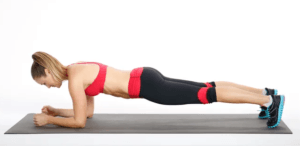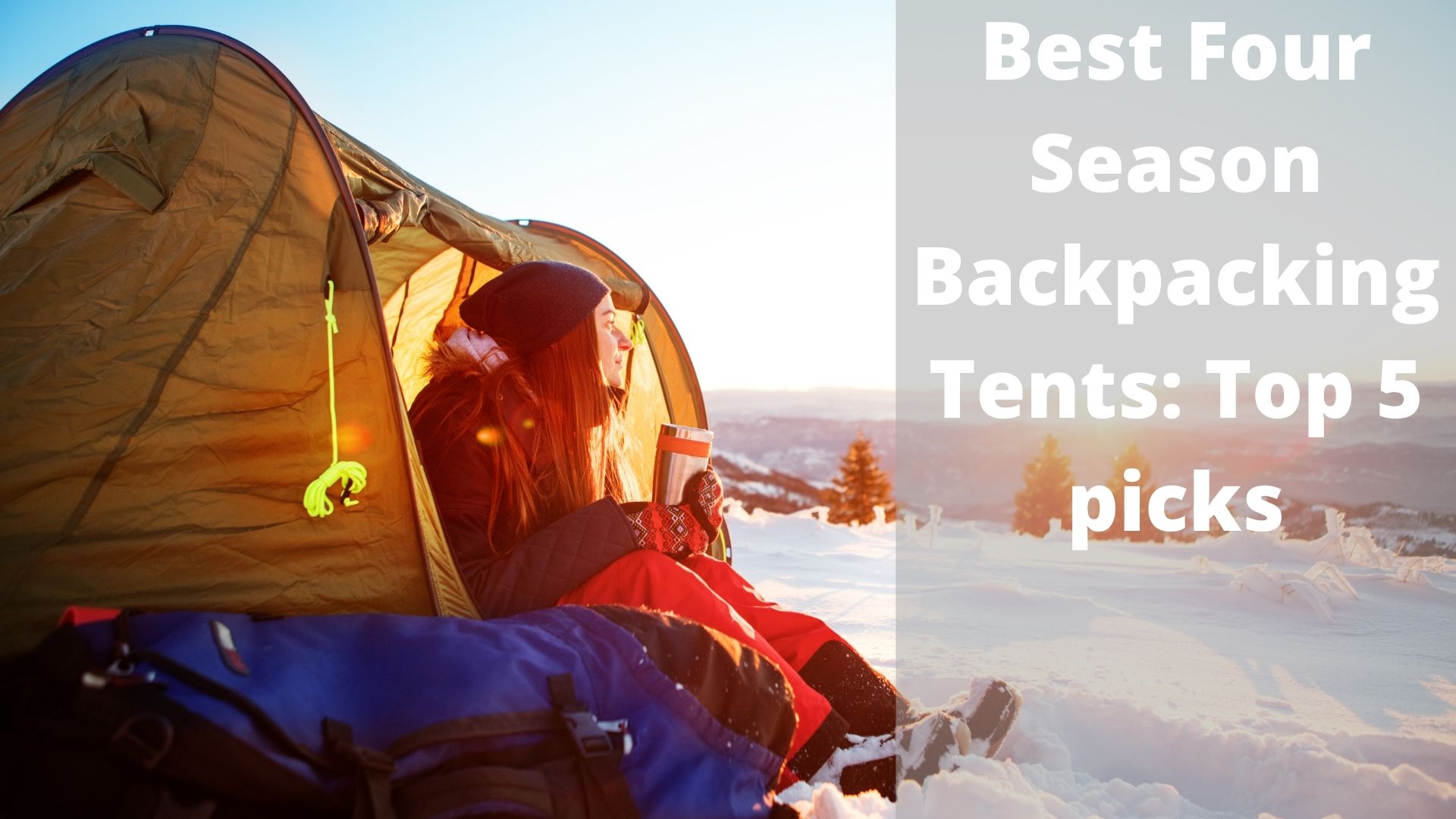Wondering how to train for backpacking? Are you looking to hit the trails this summer but aren’t sure how to train for backpacking? Don’t worry, we’re here to help. Whether you’re a beginner backpacker or an experienced one, training for your next backpacking trip is essential. If you want to spend less time struggling on through the trail and more time enjoying the hike itself then stick with me through this insightful article.
These seven powerful tips will help you train efficiently and effectively so you can focus on enjoying your time in nature. Whether you’re a beginner or an experienced backpacker, these tips will help improve your performance and make your trip more enjoyable. So let’s get started!

1. Increase your core strength
I’ve been an avid backpacker for years, and I’ve learned a lot of tips and tricks for how to train for backpacking and making my trips more enjoyable. One of the most important things I’ve learned is that having a strong core can make all the difference when you’re hauling a heavy pack through the backcountry.

Here’s why: when your core muscles are strong, they act like a supportive corset for your spine. This helps to prevent strain on your lower back and can lead to better posture overall. When your posture is good, you’re less likely to get tired as quickly, and you can hike longer distances with ease. In short, a strong core = better backpacking.
And trust me, I know from experience. A few years ago, I took a trip through the Rockies that left me so sore, I could barely walk for days afterwards. Why? Because my core muscles were weak, and I paid the price. Since then, I’ve made it a point to work on my core strength, and it’s made a world of difference on my trips. If you want to backpack better in the wilderness, start with these three core-strengthening exercises…
The Backpacker Core Routine:
- Pilates Scissor Kick: Lie on your back with both legs extended straight up in the air and your head and shoulders off the ground. From here, slowly lower one leg towards the floor while keeping the other leg extended straight up. Repeat on the other side. Do 3 sets of 10 reps on each side.
- Plank: Get into pushup position with your elbows support against the ground instead of your palms. Make sure your body forms a straight line from your head to your heels – no sagging in the middle! Hold this position for 30-60 seconds and repeat 3 times.
If this is too difficult, try modifying by dropping down to your knees instead of keeping your legs fully extended. - Russian Twist: Sit on the ground with both legs bent in front of you and lean back slightly so that your abs are engaged to keep you upright. Hold your hands together at your chest then twist side to side, tapping the ground next to you with each movement. Do 3 sets of 20 reps on each side.
By adding these three exercises to your workout routine in the weeks leading up to your trip, you’ll be surprised at how much better you feel when hauling a heavy pack through rugged terrain. A strong core not only prevents pain and fatigue – it also improves balance and stability, which comes in handy when you’re navigating rocky trails or crossing streams. So don’t neglect those core muscles – they just might be the key to making your next wilderness adventure a success!
2. Train Your Legs
Backpacking is a great way to get some exercise while spending time in nature, but it can be tough on your legs if you’re not used to it. If you’re planning on heading out into the backcountry for a hike or extended camping trip, there are some things you can do to make sure your legs are up for the challenge.
I’ll share some tips below on how to train for backpacking by building leg strength so that you can enjoy your time in the great outdoors without any pain or discomfort.
Start by Walking More Often
One of the best ways to build leg strength is simply by walking more often. If you live in an urban area, try walking to the store instead of driving, or taking public transportation instead of taxis or ride-sharing apps. If you live in a rural area, go for a walk around your neighborhood or take your dog for a longer hike than usual. The more you walk, the stronger your legs will become.
Incorporate Leg Exercises into Your Workout Routine
Another way to build leg strength is by incorporating specific exercises into your workout routine. If you already have a workout routine that you stick to on a regular basis, great! Just make sure to add in some exercises that target your legs, like lunges, squats, and calf raises. If you don’t have a regular workout routine, there are plenty of online resources that can help you get started, like this one from Shape magazine.
Take Up A New Sport
If you’re looking for a fun way to build leg strength, why not take up a new sport? There are tons of options out there, from basketball and football to soccer and tennis. Not only will you get stronger legs from playing sports, but you’ll also get some cardio in as well which is always good for your overall health.
Remember, the most important thing is to just get out there and start walking (or running, or playing sports)! The more you do it, the stronger your legs will become. Soon enough, you’ll be able to tackle any trail with ease.
3. Increase your backpacking cardio endurance
If you enjoy backpacking, then you know how important endurance is to your success and enjoyment while out on the trail. When you’re carrying a heavy backpack for miles at a time, it’s crucial to have the stamina to make it to your destination without getting too exhausted. I share some tips on how to increase your backpacking cardio endurance below so that you can enjoy longer and more difficult trails.
1) Invest in a quality backpack and hiking shoes: This may seem like an obvious tip, but it’s seriously important. If you don’t have a comfortable backpack and well-fitting shoes, your hike is going to be 10 times harder than it needs to be. Make sure to get fitted for a backpack at an outdoor retailer, and break in your shoes before hitting the trail by wearing them around the house and on shorter hikes.
2) Start slow and build up gradually: Don’t try to bite off more than you can chew by planning a massive backpacking trip when you’re just starting out. Start with some shorter day hikes near your home, and then work up to overnight trips. Once you’ve built up some confidence and experience, then you can start planning those multi-day adventures in the backcountry.
3) Do some specific cardio training: In order to really increase your backpacking endurance, you need to do some specific cardio training that mimics the activity. This means long walks or hikes with a fully-loaded backpack, stair climbing, or even elliptical workouts with weighted vest or ankle weights. By doing regular cardio workouts with extra weight, you’ll be better prepared for those longer backpacking trips.
4) Pack light but don’t skimp on the essentials: It’s tempting to want to pack as little as possible when backpacking, but this can actually make things more difficult if you don’t have what you need. Make sure to bring along essentials like food, water, shelter, and first aid supplies, but try to streamline where you can by packing multipurpose items and leaving non-essentials at home. For example, bring along a tarp that can be used as both a shelter and a way to collect water instead of bringing separate tent and water filter systems.
5) Take regular breaks on the trail: When you’re out on the trail, it’s important to take regular breaks so that you don’t push yourself too hard and end up getting injured or too exhaustion to finish the hike. Find a good rhythm of walking for 30 minutes or so and then taking a 5-10 minute break to eat and drink something before getting back on the trail again.
6) Be mindful of what you eat before and during your hike: Eating healthy foods that give you sustained energy will help immensely when trying to increase your backpacking endurance. Avoid sugary drinks and foods as well as processed foods that will only give you a short-lived energy boost before making you crash hard later on. Stick with complex carbs like whole grains, fruits, veggies, nuts, seeds, and dried fruit for sustained energy throughout your hike.
7) Stay properly hydrated throughout your hike: This cannot be stressed enough! Drinking plenty of water will help keep your energy levels up and prevent fatigue from setting in too early on in the hike.
8) Focus on enjoying the experience: One of the best ways to increase your endurance while backpacking is simply by enjoying the experience and staying focused on why you’re out there in the first place: to enjoy nature! The more fun you’re having while hiking, the less it will feel like work ,and before you know it ,you’ll have reached your destination.
Just remember : take it slow at first ,listen to your body ,and most importantly – have fun ! That’s what backpacking is all about after all.
4. Strengthen your back and shoulders
When we think about how to train for backpacking, a lot of focus is put on the legs which is of course important as I pointed out earlier. However the pack we carry is directly taxing our back and shoulder muscles specifically that help us carry the heavy pack. Below I focus on two strength building movements that target two muscle groups in particular: our back and shoulders.
Having strong back and shoulder muscles will not only make backpacking easier, but it will also help prevent injuries. Here are some exercises that you can do to strengthen these muscle groups:
Shoulder Shrugs
Stand with your feet shoulder-width apart and your knees slightly bent. Let your arms hang down at your sides, then slowly lift your shoulders up towards your ears. Hold for a count of three, then slowly lower your shoulders back down. Repeat 10-15 times.
Bent-Over Rows
Stand with your feet hip-width apart and bend forward at the hips until your upper body is parallel to the ground. Let your arms hang down, then Bend your elbows and pull the dumbbells up towards your chest. Squeeze your shoulder blades together at the top of the move, then lower the weights back down. Repeat 10-15 times.
By strengthening your back and shoulder muscles, you’ll be making backpacking through the backcountry easier on yourself – and less likely to injure yourself in the process. Give these exercises a try and see how they help you on your next hike!
5. Don’t Forget About the Feet

The feet are one of the most important body parts when it comes to backpacking. You need to make sure that they’re comfortable and supportive, so you can hike for miles without getting tired or sore.
Here are some tips on how to train for backpacking by preparing your footwear:
Make sure the shoes are broken in before you go on the trip. This allows them time to stretch out, which will help prevent blisters from forming later on (and also make wearing them easier).
If possible, get out on a couple walks in your neighborhood or local trail beforehand!
Another very important part to protecting your feet is to have adequate sock replacement to keep your feet fresh and dry. Whether its the unsuspecting rain passing through or an ankle high creek to cross or just the wonderful sweat worked up by your amazing trailblazing, your feet will get damp and you will want to change out your socks regularly to keep your feet trail ready. Get yourself some high-quality hiking socks which are typically thicker material and moisture wicking.
Ultimate Backpacking Guide: What to Pack, How to Pack, and the 10 Must Pack Essentials ->
6. Last but certainly not least, nutrition
Getting in shape for a backpacking hike can be daunting, and proper nutrition is a key part of the process. The same goes for staying nourished while on the hike itself. Below we explore how to train for backpacking with some tips and tricks for making sure you’re getting the nutrients you need both before and during your backpacking adventure.
Pre-hike Nutrition – When you’re training for a backpacking hike, it’s important to eat a nutrient-rich diet that will give you the energy you need to power through long days on the trail. Here are some of the best foods to include in your pre-hike meal plan:
Complex carbohydrates- Contrary to popular belief, carbs are not the enemy! Rather the type of carbohydrates makes all the difference: Complex carbs like whole grains including oatmeal, brown rice, quinoa, and sweet potatoes provide sustained energy, versus the sugar rush that comes from simple carbs like candy or white bread.
Protein – Protein is essential for repairing muscle tissue, so it’s important to get enough when you’re working your muscles hard during training hikes. Good sources of protein include lean meats, poultry, fish, tofu, legumes, and nuts.
Healthy fats – contrary to what we’ve been led to believe by diet culture, not all fats are bad for you! Healthy fats help promote satiety and can actually help with weight loss. Some good sources of healthy fats include avocados, olive oil, nuts, and seeds.
Water – It’s important to stay hydrated when you’re hiking, but it’s also crucial to drink plenty of water when you’re training. Aim to drink eight glasses a day – more if it’s hot or you’re sweating a lot during your workouts.
On-trail nutrition
Just because you’re out in the wilderness doesn’t mean you have to sacrifice nutrition! There are plenty of portable, lightweight foods that will keep you going throughout your hike.
Here are some of our favorites:
Dried fruit: Dried fruit is an excellent source of natural sugars and complex carbs, making it perfect for an on-the-go snack. Just be sure to watch your portion sizes – dried fruit is high in calories due to its concentrated sugar content.
Trail mix: Trail mix is a classic for a reason! It’s easy to make your own custom blend with your favorite nuts, seeds, dried fruit, and even chocolate chips (for an extra boost of energy). Just be careful not to eat too much – it’s easy to mindlessly munch on trail mix when you’re hiking.
Jerky: Jerky is a great source of protein that will help repair your muscles after a long day on the trail. Look for brands that use lean cuts of meat with minimal added ingredients.
Hardboiled eggs: Hardboiled eggs are an excellent source of protein and fat – perfect for keeping you satisfied until your next meal. They can be a little tricky to transport without breaking or spilling, but they’re worth the effort!
Water: Remember to stay hydrated! Drink water throughout the day and carry extra in case you run into any unexpected delays on the trail. A hydration pack is a great option for hands-free carrying.
Proper nutrition is essential both while training for a backpacking hike and during the hike itself. By following these tips, you’ll be sure to have enough energy to power through even the most challenging trails!
How to Train for Backpacking
To become a better backpacker, you need to train hard and eat well.
Backpacking is a great way to see the world and get some exercise at the same time, but it can be tough on your body if you’re not prepared. These six tips we just covered will help you train for backpacking and make your trip more enjoyable. So train hard and eat well and you will have an enjoyable trip through the backcountry! What are you waiting for? Start planning your next backpacking adventure today.
What’s you’re next backpacking adventure? Let us know in the comments below!


